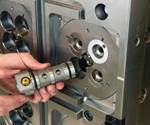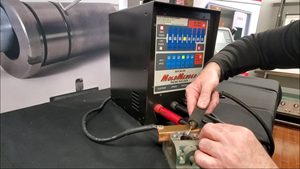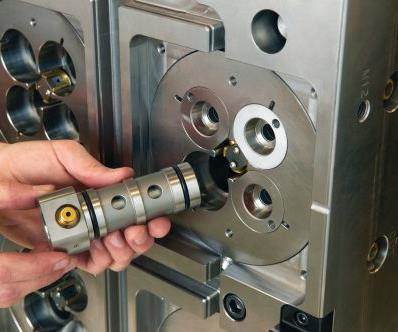In the Trenches: Think Like a Toolmaker
Fundamental knowledge and understanding is necessary in mold repair.
It is said that a defining indicator of your age is when you refuse to keep up with technology. So when I struggle with technology, I either try to mask it or make light of it while I seek the aid of my younger counterparts. That doesn’t mean I am dismissing technology, I just believe that, however dazzling a new technology may seem, it is almost always an enhancement, improvement or adaptation of the previous technological development. It’s the fundamentals that matter.
New technology allows us to keep up with demand and be competitive. I have no argument with these benefits, but technology can also sometimes become a crutch. For example, a certain IT manager (of my generation) said that none of the young professionals she hires has any idea how to program in binary code. They all have degrees and credentials, but they do not possess the basic fundamentals upon which computing is based.
Machinists who rely on technology can produce amazingly accurate work in remarkable time, and I’m not denigrating them one bit. If that is the scope of their work then the understanding of technology may be all they ever need to know. However, in the realm of mold repair, much depends upon reverse engineering, so an understanding of fundamental concepts is critical.
For example, the ability to indicate your way into an arced wall of an unknown radius with draft is contingent upon understanding how a radius generates from a point, which handle changes the location of that point and which handle changes the size of the radius swung from it. Additionally, when you do start to sneak up on the cut and realize it’s not quite right, an understanding of what is occurring is necessary in order to decide if the location or size needs adjustment.
You may be asking yourself what difference it makes. We have the technology to both design and manufacture any shape we can conceive, so who cares if we know all that? As I’ve intimated, in the world of mold repair, it is important to be able to put things back in order, back the way they were made, and oftentimes this is without the benefit of the latest and greatest CNC equipment.
Many who work in mold repair do so in minimally equipped shops. The old line “We’ve done so much with so little for so long, we’re qualified to do almost anything with practically nothing” seems more true than humorous sometimes. The equalizer for “practically nothing” is brainpower, a firm grasp of the fundamentals of geometry, tested and proven machining skills, and an understanding of the full capabilities of the meager equipment one can access.
How many younger machinists have ever stopped to consider that a CNC machine cannot move or cut in a curved or circular path? There is no fixed point around which the spindle swings so that it can cut a curve. All it can do is make microscopic X and Y moves that approximate a curve. The same can be done on a manual mill. Not with the same fluidity or resolution, but the principle is exactly the same. Who thinks like that? A toolmaker.
Related Content
The Ins and Outs of Hot Runner Temperature Control
A training checklist that explains the why and how of proper hot runner temperature control and system management.
Read MorePortable Low-Heat, Non-Arcing Resistance Welder for Mold Repair
Rocklin’s user-friendly MoldMender Micro Welder delivers simple and cost-effective localized repair in-house with precision and versatility, enhancing mold and die durability and reducing disassembly and downtime.
Read MorePrecision Meets Innovation at IMTS 2024
After attending IMTS, it's clear that the integration of advanced technologies is ready to enhance precision, efficiency and automation in mold manufacturing processes. It’s a massive event, so here’s a glimpse of what the MMT team experienced firsthand.
Read MoreQuestions and Considerations Before Sending Your Mold Out for Service
Communication is essential for proper polishing, hot runner manifold cleaning, mold repair, laser engraving and laser welding services.
Read MoreRead Next
In the Trenches: Mold Repair
In this multi-part series of articles, contributer James Bourne, a tool repair supervisor and freelance writer, shares his own personal struggles in the business, as well as lessons learned and tricks of the trade garnered along the way.
Read MoreAre You a Moldmaker Considering 3D Printing? Consider the 3D Printing Workshop at NPE2024
Presentations will cover 3D printing for mold tooling, material innovation, product development, bridge production and full-scale, high-volume additive manufacturing.
Read MoreHow to Use Strategic Planning Tools, Data to Manage the Human Side of Business
Q&A with Marion Wells, MMT EAB member and founder of Human Asset Management.
Read More




















